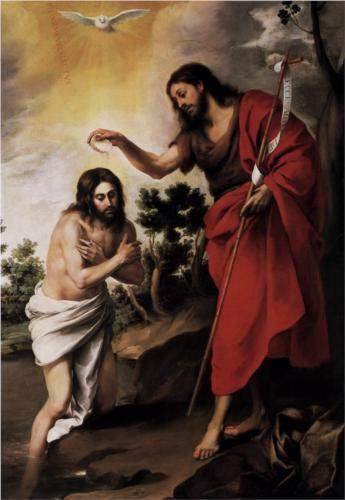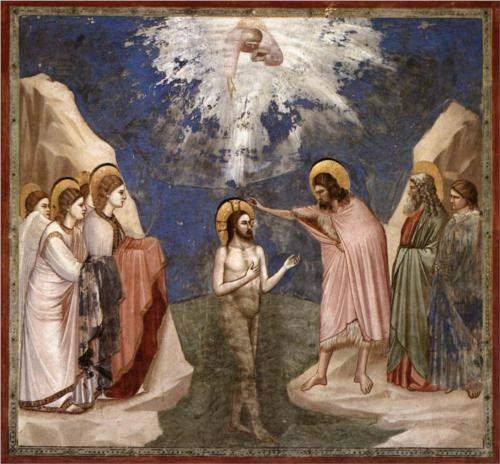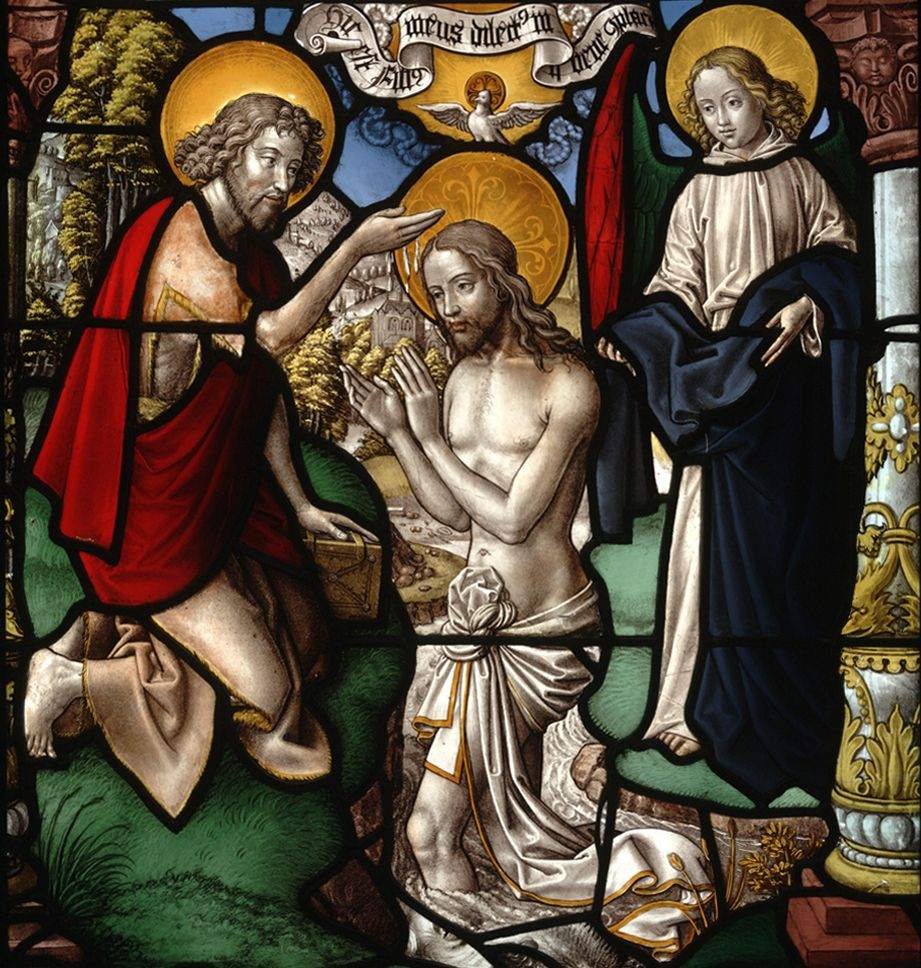
Part of a series on Baptism in Depth.
In my study of Baptism so far, I’ve taken for granted that the baptism of John the Baptist was somehow irrelevant to Christian Baptism, since all Christians agree that it was merely a foreshadowing of Christ’s. I now think my omission was a mistake. All combined, the accounts of John give us the most voluminous treatment of Baptism in the New Testament. All four Evangelists found John’s Baptism to be of central importance to their Gospel narratives, and necessary to understanding the person of Jesus and His work. That John is known to Christian tradition as “The Baptist” places a special emphasis on his role in connection with Baptism. To grasp a full understanding of what Baptism is and what it does, then, we should turn first to John.

“To give knowledge of salvation to His people”
The Evangelists understood John (Matthew 3:3, Mark 1:3, Luke 3:4), as John understood himself (John 1:23), to be the immediate forerunner of the Christ, “the voice of one crying in the wilderness, ‘Prepare the way of the LORD,’” in fulfillment of the prophecy of Isaiah (Isaiah 40:3). In what way was John supposed to prepare Christ’s way? John’s father Zechariah prophesied in his Benedictus:
You, child, will be called the prophet of the Most High;
for you will go before the Lord to prepare his ways,
to give knowledge of salvation to his people
in the forgiveness of their sins,
through the tender mercy of our God… (Luke 1:76–77)
So we see that John’s mission is to give knowledge of salvation to [the LORD’s] people in the forgiveness of their sins. John gave knowledge of salvation — an understanding of how people could be saved — in the forgiveness of their sins. What in John’s message would have given that understanding?
From John’s first appearance, he preached a simple message: a baptism of repentance. “I baptize you with water for repentance, but he who is coming after me is mightier than I, whose sandals I am not worthy to carry” (Matthew 3:11). It is implied, then, that if John’s message was to convey “knowledge of salvation,” that knowledge had an intrinsic connection to his baptism and to repentance.

“He will baptize you with the Holy Spirit and fire”
John is also plain in his message that his baptism was only a precursor of a greater Baptism that was to come: “He will baptize you with the Holy Spirit and fire” (Matthew 3:11, Luke 3:16). Certainly the key aspect of this Baptism was to be “with the Holy Spirit” (cf. Mark 1:8), since Mark refers to only Christ’s Baptism “with the Holy Spirit,” while both Matthew and Luke refer to the same Baptism as being “with the Holy Spirit and fire.”
Now, I have heard some Protestants, particularly from my own Charismatic tradition, suppose that this refers to two different baptisms, “with the Holy Spirit” and “with fire.” But what is John actually saying here? It’s evident in the original texts that the two terms refer to the same object: although many English translations include “with” twice, there is only one preposition here in the Greek: ἐν πνεύματι ἁγίῳ καὶ πυρί [en pneumati hagiō kai puri], with the Holy Spirit and fire. This is a literary device called hendiadys (Greek for “one by means of two”), by which two words connected by a conjunction are used to express a single idea, where an adjective and a substantive might otherwise be used. Christ’s “baptism with the Holy Spirit and fire” is one and the same: baptism with the fiery Holy Spirit. In the words of the great Jesuit commentator Cornelius à Lapide, far more eloquent than my own:
By the Holy Ghost and fire is meant the Holy, Fiery, and Inflaming Spirit, who is fire—that is, like fire—and, as fire, burns, and kindles. It is a hendiadys. The Holy Ghost, as it were fire, purges the faithful from their sins, kindles and illuminates them, raises them towards heaven and strengthens them, unites them closely to Himself, and, like fire, transforms them into Himself. (The Great Commentary of Cornelius à Lapide, Volume 1: S. Matthew’s Gospel, trans. T.W. Mossman [London: John Hodges, 1887], 122)
Conclusion
So what is the upshot of all this? John declares plainly that his baptism is merely with water, a symbolic washing away of sins from repentant sinners. So Jesus’s Baptism with the Holy Spirit and fire is clearly something more. John himself associates Christ’s Baptism with the work of the Holy Spirit. So the logic seems to me:
- John baptized with water.
- John said the Christ would baptize “with the Holy Spirit and fire” — not “with water,” leading to a possible symbolic interpretation.
- But Jesus also baptized with water (cf. John 4:1), and water baptism became a Christian sacrament.
- No other movement of the Holy Spirit in Scripture is referred to as “baptism.”
- It appears, then, that the Baptism John prophesied would be “with the Holy Spirit and fire” was the only Baptism Jesus is known to have administered, in water.
By the testimony of John, Christian Baptism was to be something much more than merely “with water.” Baptism itself was to be a movement of the Holy Spirit.
Jn. 4:2 comments parenthetically that “Jesus himself did not baptize, but only his disciples.” So the disciples were the only ones actually doing the baptizing, and this baptizing was for those who were becoming disciples of Jesus (since 4:1 says “Jesus was making and baptizing more disciples than John”). Yet even this baptism was “prophetic,” because in Jn. 7:37-39 Jesus will speak of future living waters to be given to those (disciples) believing, “for as yet the Spirit had not been given” (to disciples),
Welcome, and thanks! That’s a splendid connection in John 7, and yes, certainly, the waters of Baptism took on a whole new meaning after the coming of the Holy Spirit — at which time believers would truly be baptized with the Holy Spirit and fire. I think the note in John 4:2 indicates that at that time Jesus was not baptizing, but only His disciples — but certainly He instructed them to baptize, and it’s probable (the Church Fathers believed) that He first baptized His disciples. It’s also interesting to note that the earliest believers understood water flowing from his heart to be the blood and water that gushed from His pierced side at the Crucifixion (the “heart” representing in the ancient mind the innermost part, not necessary the heart as an organ). God bless you and His peace be with you!